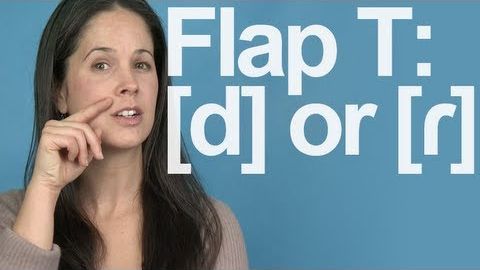
Subtitles & vocabulary
Flap T: Really a D Sound? American English Pronunciation
00
Sofi posted on 2014/05/29Save
Video vocabulary
native
US /ˈnetɪv/
・
UK /ˈneɪtɪv/
- Noun (Countable/Uncountable)
- Someone from or born in a specific country
- Original inhabitant, e.g. before others
- Adjective
- Caused by natural ability; innate
A2
More comment
US /ˈkɑmɛnt/
・
UK /'kɒment/
- Noun (Countable/Uncountable)
- Something you say, giving an opinion; remark
- An explanatory note in a computer program.
- Verb (Transitive/Intransitive)
- To say something that gives your opinion
- To add explanatory notes to a computer program.
A2
More tongue
US /tʌŋ/
・
UK /tʌŋ/
- Noun
- Long, thin part of (e.g. shoe under the laces)
- Meat from the mouth of an animal, cooked as food
- Transitive Verb
- To using your mouth to produce musical notes
- To use your mouth to touch something
A2
More sound
US /saʊnd/
・
UK /saʊnd/
- Adjective
- Sensible, dependable and reliable
- Unbroken or undisturbed, as of sleep
- Noun (Countable/Uncountable)
- Unique quality that characterizes a style of music
- Waves traveling in air or water that can be heard
A1TOEIC
More Use Energy
Unlock All Vocabulary
Unlock pronunciation, explanations, and filters
